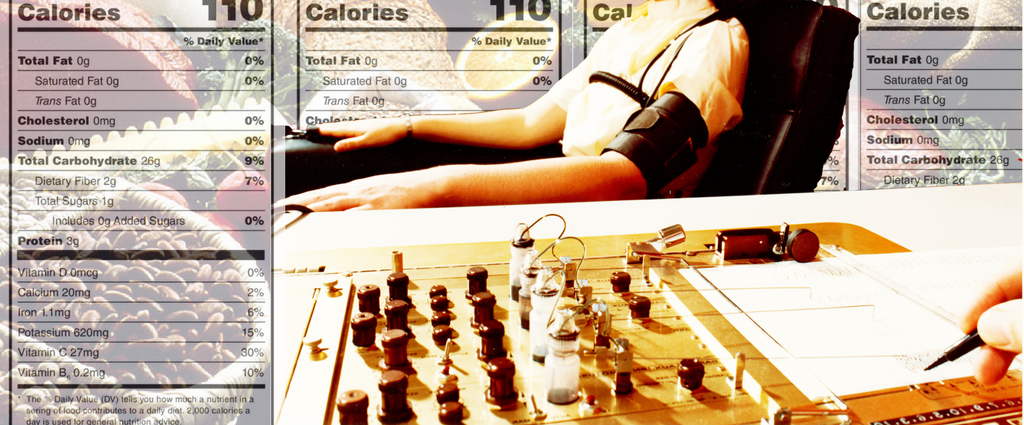
iStock / aldomurillo
Industry-involved research is 6 times more likely to be flattering toward the sponsor’s interests than counterparts without a conflict of interest.
It might not surprise you to hear that research funded by the food industry flatters the food industry. Examples abound: That study on how cranberry juice can prevent urinary tract infections? Bankrolled by the cranberry growers’ co-op. Those findings about pasta’s link to lower obesity? Financed by the world’s largest pasta producer. And the recent experiment that found eating nuts might significantly increase “orgasmic function and sexual desire”? Big Nut picked up the tab.
Each of these cases represents just the tip of an iceberg of industry influence. As such, they tell us little about how prevalent these conflicts of interest are in the world of food research as a whole. Now, a just-published analysis attempts to take a first-of-its-kind, large-scale snapshot of the issue in all its forms, from researcher affiliations to funding to food donations. And reader, it’s prevalent. Not only that, industry-involved research—more often than not—leads to findings that fall neatly in line with the interests of their sponsor.
In the large majority of cases, influence took the form of direct funding.
As it turns out, nearly one out of every seven studies in the most popular nutrition journals disclosed some kind of involvement by the food industry—with one publication, titled The Journal of Nutrition, reporting influence in almost one out of three studies. Producers of processed food, dietary supplements, and dairy made up the largest sectors involved with research. But most staggering to the authors of the analysis was simply how flattering the results of industry-involved research are, compared to counterparts without a conflict of interest.
“The papers that had food industry involvement were six times more likely to have results that favored the food industry than a random sample of ones that had no involvement,” said Gary Sacks, an associate professor at Deakin University in Australia and the lead author of Wednesday’s article. “I was surprised…six times more was a high number.”
To conduct this analysis, Sacks and his team scrutinized every original research article, review, and report published in the 10 top-cited food and nutrition journals in 2018. Of this total, they found that 13.4 percent disclosed some form of industry involvement. In the large majority of cases, influence took the form of direct funding. In other cases, it appeared as author affiliation with food companies, donations of supplies, or some unspecified participation noted in a study’s acknowledgements.
“It’s sometimes quite difficult to see when you’re looking at who’s funding a study, if [they] are related to the food industry.”
In some cases, food companies can obscure their involvement through the use of what are known as “front groups,” third-party organizations disguised by innocuous-seeming names. (Until recently, for example, Coca-Cola funded a front group called the “Global Energy Balance Network” that conducted research on obesity.) Sacks and his team included front groups in their definition of industry involvement.
“It’s sometimes quite difficult to see when you’re looking at who’s funding a study, if [they] are related to the food industry,” he said. “So when we would see a paper funded by some random-sounding group, the challenge was actually digging in, going on their website and seeing who’s funding them. Because the food industry often tries to hide that.”
One might argue that there’s nothing untoward about industry support for research, so long as it contributes to our understanding of nutrition. But some say the lack of a strong firewall between funding and findings can jeopardize the integrity of dietary research.
“Industry influence is exerted at an unconscious level,” said Marion Nestle, a nutrition and food studies professor emeritus at New York University, in an email. Nestle is the author of 2018 book Unsavory Truth, which details food industry influence in research and cited a preliminary version of Sacks’s research. “Investigators did not intend to be influenced, do not recognize that they were influenced, and deny the influence.”
“Industry influence is exerted at an unconscious level.”
Nevertheless, the bias has ripple effects: Flattering research often ends up publicized in the form of viral headlines that muddy our understanding of what to eat and why. In turn, it can dampen support for food regulations that may benefit public health, Sacks said. Just think about one of the biggest debates in nutrition policy this year—the next iteration of the Dietary Guidelines. According to a New York Times report, half of the scientists on the advisory committee reported ties to the food industry, raising concerns about undue influence on the guidelines.
For Sacks, this analysis raises new questions about how journals can better protect the integrity of the research they publish. The path forward might involve a lot of self-examination: Academic publications are often themselves run by editors with food industry ties, Sacks pointed out. “A new line of inquiry might be to explore that a bit more in-depth, to understand how [staff] are actually making editorial decisions and how the industry is potentially influencing that.”
And for eaters, this report is yet another reminder to hold research that sounds too good to be true—eat nuts to nut! eat pasta to lose weight!—at arm’s length.









